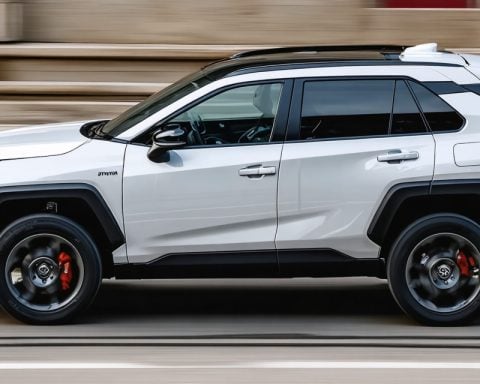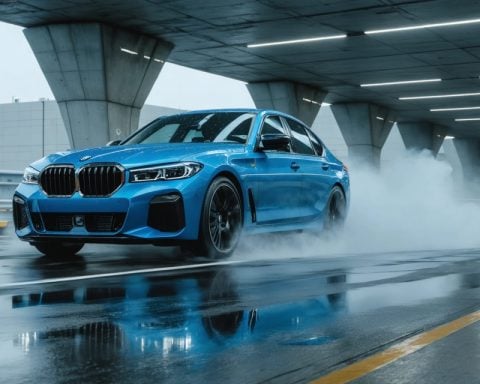Disappointing Launch for Tesla’s Cybertruck
In its first year on the market, the Tesla Cybertruck has failed to meet sales expectations. Despite a rollout that generated immense excitement and anticipation, the real-world performance has left many potential buyers unimpressed. The futuristic design and innovative features, which captivated countless fans, have not translated into the strong sales figures Tesla had hoped for.
Many enthusiasts who initially had their sights set on the Cybertruck are now reconsidering their options. In an unexpected turn, one buyer opted for a Tesla Model 3 instead. This decision highlights a growing trend where consumers are gravitating towards more established models within Tesla’s lineup, valuing practicality and reliability over trendsetting designs.
The Model 3 has showcased consistent demand thanks to its affordability and proven technology, proving to be a safer bet for those looking to invest in electric vehicles. As the automotive landscape shifts, potential buyers may be prioritizing features like range, interior comfort, and driving experience over the novelty of a distinctive vehicle like the Cybertruck.
As Tesla navigates these sales challenges, the path ahead remains uncertain. The company must reassess its strategy not only to elevate interest in the Cybertruck but also to maintain the momentum of its existing models. The electric vehicle market continues to evolve rapidly, and Tesla will need to adapt to maintain its leadership position.
Broader Implications of Tesla’s Cybertruck Lament
The disappointing launch of Tesla’s Cybertruck resonates beyond individual consumer choices, echoing through social, cultural, and economic landscapes. As the company grapples with unmet sales expectations, it raises critical questions about consumer behavior in the electric vehicle (EV) sector, where practicality is becoming a more significant value than innovation alone. This trend could reshape the future of automotive marketing, pushing manufacturers to prioritize functionality over avant-garde aesthetics.
Moreover, the impact on the global economy cannot be overlooked. Tesla’s struggles may signal a broader caution among investors and manufacturers within the EV market, especially as the competition intensifies. Established carmakers are ramping up their own electric offerings, and their ability to leverage extensive supply chains and consumer loyalty poses a growing threat to Tesla’s dominance. This shift presents an opportunity for new players, potentially leading to a more diverse and competitive market, which can ultimately benefit consumers through lower prices and more choices.
The environmental implications could also be significant. If consumers opt for established models with proven efficiency, it could slow the momentum toward transitioning to electric vehicles, hindering efforts to combat climate change. As such, the Cybertruck’s launch may serve as a case study on the importance of aligning innovative designs with consumer expectations and environmental goals in the ever-evolving landscape of sustainable mobility.
Cybertruck: Tesla’s Unmet Expectations and the Shift in Consumer Preferences
The Cybertruck’s Launch and Sales Struggles
Since its highly anticipated unveiling, the Tesla Cybertruck has encountered hurdles in meeting sales expectations during its first year. Despite the initial excitement and a bold, futuristic design, the vehicle’s actual market performance has fallen short, leading many potential buyers to reconsider their purchasing decisions.
Consumer Transition to Established Models
Interestingly, a notable trend has emerged among Tesla enthusiasts who were initially drawn to the Cybertruck. One buyer’s decision to purchase a Tesla Model 3 instead is emblematic of a broader shift in consumer preferences. The Model 3 has proven to be a reliable choice, boasting affordability and established performance that many buyers prioritize over a striking design.
Features Comparisons: Cybertruck vs. Model 3
– Pricing: The Model 3 starts at a lower price point compared to the Cybertruck, attracting budget-conscious consumers.
– Performance: The Model 3 continues to excel in range and driving experience, with many users reporting high satisfaction levels.
– Usability: The more traditional car design and comfort of the Model 3 appeal to families and everyday users over the unconventional Cybertruck form factor.
Consumer Insights and Market Trends
Surveys indicate that consumers are increasingly valuing practicality in electric vehicles. Key factors influencing this trend include:
1. Range Anxiety: Buyers lean towards models that offer longer ranges and more robust charging infrastructure.
2. Interior Comfort: Traditional models with well-thought-out interiors are seen as more appealing for daily use.
3. Reputation of Established Models: The reliability associated with long-standing models affects buyer decisions significantly.
Tesla’s Strategic Challenges Ahead
As Tesla faces these challenges, the company’s approach to the Cybertruck’s marketing and production will be crucial. Here are some aspects Tesla may need to consider:
– Reassessing Marketing Strategies: Emphasizing practicality and the benefits of owning a Cybertruck could help regain interest.
– Enhancing Features: Incorporating additional features or technology updates that align with consumer desires for reliability could improve sales.
– Exploring Pricing Adjustments: Modifying the price or providing financing options may attract a more diverse customer base.
Future Predictions for Tesla’s Portfolio
Looking ahead, several predictions can be made about Tesla’s strategies:
– Expansion of Existing Models: Tesla may introduce new variants of the Model 3 and Model Y to capture more market segments.
– Increased Focus on Sustainability: With growing consumer demand for eco-friendly options, Tesla might enhance its sustainability efforts across all models, including embracing more recyclable materials in production.
– Adapting to Consumer Feedback: Tesla’s ability to listen to and implement feedback from the market will be pivotal in addressing the current dissatisfaction among Cybertruck prospects.
Conclusion
As Tesla navigates these evolving consumer expectations and market dynamics, it will be critical for the company to balance innovation with practicality. The Cybertruck’s future may depend on how well it aligns with the needs of today’s buyers and whether Tesla can reinforce its reputation for creating high-quality electric vehicles. For more updates on Tesla and the electric vehicle market, visit Tesla.













